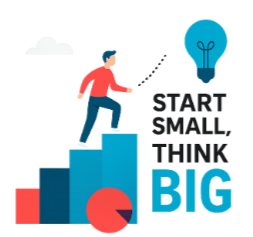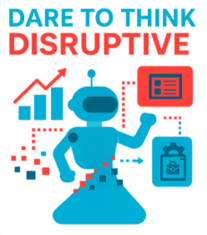Rethinking Processes with AI at the Center
These days, we often hear about failed AI projects and warnings that the AI bubble is about to burst.
But we believe the opposite: with the right approach, AI can deliver significant value, helping us work more efficiently and focus on what we truly enjoy.
Every process is designed by a person, usually to make their own work as efficient as possible, or at least, that’s the idea. Yet, when we think about AI, we still tend to see it as an add-on to existing processes. We hope that inserting AI into each step will make us more productive. But what if we went a step further?
What if we redesigned our processes entirely, placing AI at the center and allowing it to drive efficiency and productivity from the ground up?
 AI-led doesn’t mean AI-only
AI-led doesn’t mean AI-only
Of course, this isn’t an exact science.
It requires trial and error, and it won’t be perfect from day one. We must maintain a critical perspective and remember that AI isn’t completely reliable. That’s why human oversight and verification remain essential parts of any AI-driven workflow.
A practical example: handling purchase orders
Let’s make this concrete. In many companies, handling purchase orders is a repetitive administrative task. An employee receives a PDF by email, opens it, reads it, and (if everything looks good) processes it into the system of record (such as accounting software). Now imagine this process with AI at the center:
An AI agent picks up the incoming order, checks known suppliers, validates products and quantities, and automatically processes it into the accounting system. If the agent detects an anomaly, say an unusual order quantity or an unrecognized supplier, it can notify the employee to review it instead of halting the entire flow.
Zooming out: the bigger picture of Al agents
That’s just one small part of a much larger procurement process.
Zoom out, and an AI agent could also monitor stock levels, suggest new orders, evaluate suppliers, and even manage order approvals. The potential is huge, but we don’t need to do it all at once.

Start small, think big
Following the principle of “start small, think big,” we can break large processes into modular building blocks. Each small automation step delivers immediate value, while building the foundation for a broader, AI-infused process landscape. We also won’t use AI just for the sake of it. Where traditional automation works better, we’ll use that. Our focus is on AI-infused solutions, led by humans.

Agentic Al: the future?
Agentic AI is not about replacing people; it’s about empowering them. By allowing AI to handle the repetitive and predictable tasks, we can focus on what humans do best: creativity, judgment, and building connections.

